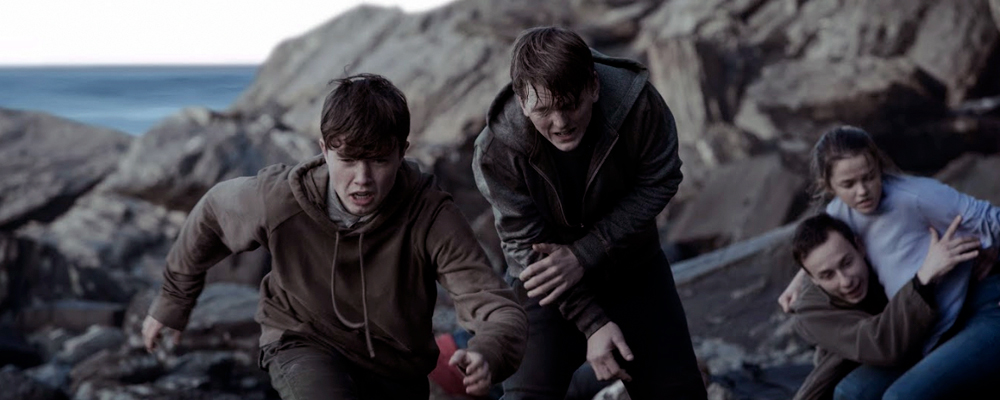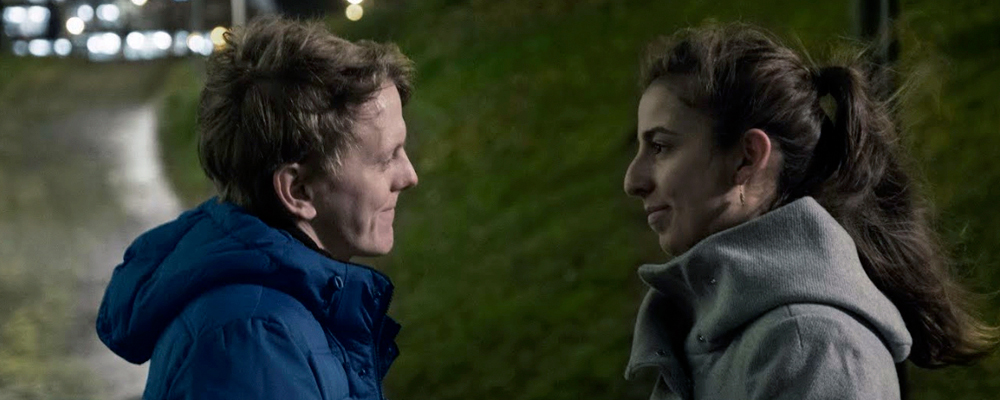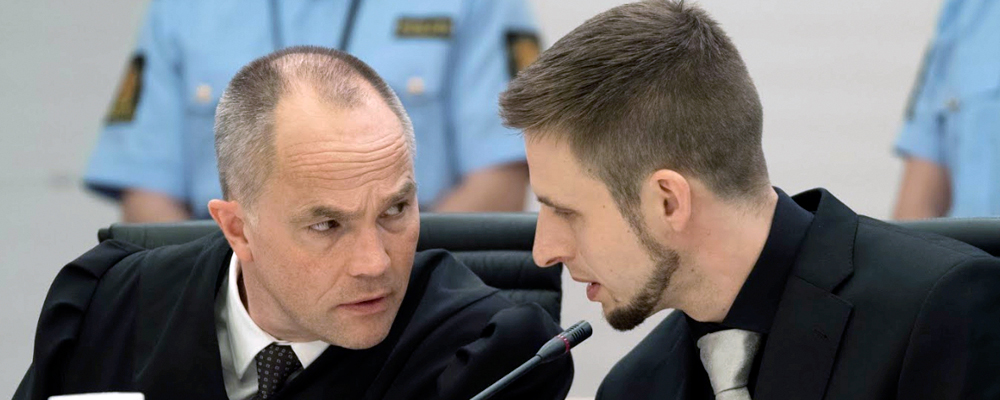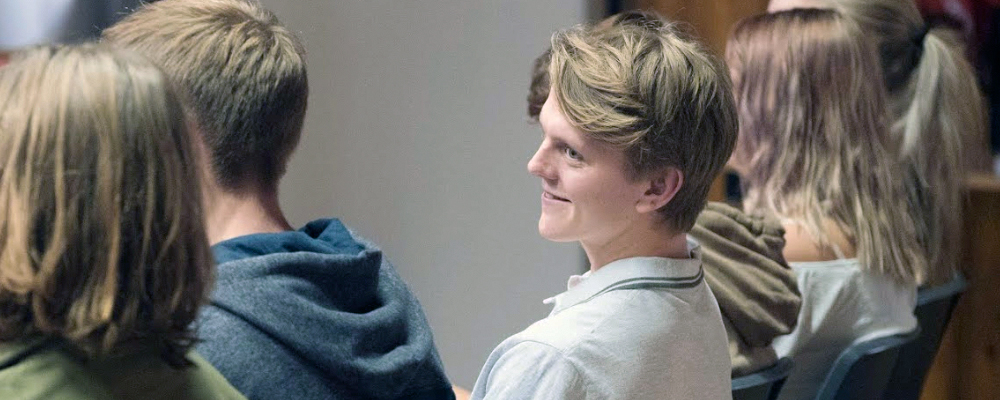‘22 July’ Recreates the Horror of the 2011 Norway Attacks
Alci Rengifo
Netflix’s visceral and important new movie, “22 July” tells a true story that meditates on terror from the emerging, nationalist right-wing. On July 22, 2011, Anders Behring Breivik, fueled by anger mixed with a fanatical ideology, killed eight people with a car bombing outside the prime minister’s office in Oslo, Norway, before killing another 69 at a youth camp on the island of Utøya. This film is a dramatic chronicle of those events and its human toll.
The film opens with Breivik (Anders Danielsen Lie) preparing his attacks as unsuspecting campers arrive at the Workers’ Youth League (AUF) summer camp in Utøya. Among the campers is Viljar Hanssen (Jonas Strand Gravli). Once Breivik carries out his attack it is done with a cold, brutal precision as he carries out the bombing and ferries to the island disguised as a police officer. As he mows down victims he rants against “Cultural Marxism” and other, perceived ideological foes. Authorities arrive and capture Breivik, but Viljar is critically wounded with bullet fragments lodged in his head. As Viljar begins a painful recovery process, with the support of his parents Sveinn (Thorbjørn Harr) and his mother who is running for office. Breivik asks for a specific lawyer, Geir Lippestad (Jon Øigarden) to represent him. What Lippestad finds in prison is a man lost in his own, fascist hubris. Breivik believes he is the initiator of a great, nationalist struggle to reclaim Europe from Marxism, liberalism and a Muslim takeover by immigrants. He sees his trial as a chance to voice his views, but Viljar is also faced with the option of testifying, which would provide a human face to Breivik’s horrific crime.
“22 July” is written and directed by Paul Greengrass, famous for the Jason Bourne films but who has also mixed politics with engaging cinema in a way not seen since Oliver Stone in the 90s. In films like “United 93,” “Bloody Sunday” and “Captain Phillips,” Greengrass has taken recent history to mine it for human stories and important ideas. In this film he bravely re-creates the Norway attacks with an unflinching eye. The first few minutes are harrowing as we see Breivik carry out his attack, shooting down young campers while spewing his paranoid manifesto. In a year where we have seen cartoonish depictions of terrorism, such as the Muslim suicide bombers crossing the border in “Sicario: Day of the Soldado,” here is a film that is a serious meditation on what terrorism actually is. Breivik is a driven, self-appointed foot soldier who proudly associates himself with proto-fascist movements with flashy names like “The Knights Templar.” He emails his manifesto before carrying out the attack with a medieval icon as a cover. Conditioned to see violent, public terror as something readily associated with groups like ISIS, here we have a mass killer spouting political ideas out of a Steve Bannon talk. Greengrass expertly conjures the horror and unbearable tension of the attack, giving us a ground-level view of what it must feel like to hide from an approaching shooter. Because he is not constrained by censorship, Greengrass does not look away when bullets tear through skin and bone, displaying the awful truth of violence.
If the opening moments are searing, it is the rest of the movie that has the most urgent and important things to say. With Viljar we get the human face of terrorism’s victims. He is left traumatized and haunted, running off into the snow because he can’t deal with the post-traumatic stress. But he is also shaken into a new awareness by his experience, and he befriends another survivor, Lara Rachid (Seda Witt) who testifies at Breivik’s trial. Her own testimonial is a powerful rebuke of Breivik’s racist ideology. Greenrgrass does not romanticize these characters. He writes and films them with an almost documentary starkness. As with the attack, the scenes with Viljar in the hospital recovering and putting his broken mind back together, talking with his parents and siblings, have a real time feel. Like the films of Costa-Gavras “22 July” is not interested in exaggeration, but in using great craft to remember an event that happened, and try to understand what it means.
This brings us to the character of Breivik, who is played by Anders Danielsen Lie like a calm monster, a stone-cold fanatic harboring volcanic rages. Lippestad almost can’t believe he’s defending this zealot. Greengrass does not try to dissect Breivik’s upbringing or history to try and find answers, instead he is putting on display the modern-day nationalist willing to use terrorism to achieve a goal. Breivik never gives the idea that he’s a well-read or even curious personality. He has simply absorbed countless amounts of anti-immigrant, anti-communist propaganda and spun it into a code that gives his lonely life meaning. In a brief scene his mother seems aloof as to why her son would do any of this. So dangerous is Breivik that a nationalist leader called into court to testify makes an effort to emphasize that he would never put Breivik in charge of anything. But “22 July” has a chilling relevancy because Breivik is but one notorious figure from within a chorus of voices spouting the same views and absorbing the same propaganda, whether in Europe or the United States. When he enters court Breivik proudly gives the fascist salute and one can’t help but remember Charlottesville.
In the United States the Norway attacks of 2011 receive little mention. Say “terrorism” and the average American will think of fanatical Muslims or men waving black flags. With “22 July” Greengrass reminds us that fanatical violence comes in different banners. He tells a survivor’s brave story, he profiles a man driven to murder by his own, toxic ideology, but at its heart the film is a warning of more terrors to come.
“22 July” premieres Oct. 10 on Netflix.





